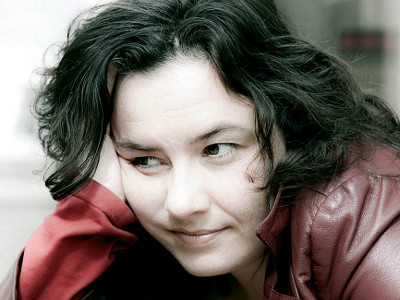Bio
Auður Jónsdóttir was born on March 30, 1973. She is a writer and freelance journalist and has published articles, essays and interviews in various journals and newspapers.
Her first published work of fiction is the short story “Gifting” (Marriage), published in the literary magazine Andblær in 1997. Other short stories have appeared in magazines and collections since then. Auður’s first novel, Stjórnlaus lukka (Uncontrollable Luck, 1998), was nominated to the Icelandic Literature Prize in the same year. Since then, she has sent forward other novels as well as books for children and teenagers, among them a book about her grandfather, Halldór Laxness. Her novel Fólkið í kjallaranum (The People in the Basement), received the Icelandic Literature Prize in 2004 and the novel, Tryggðarpantur (Love Token), was nominated to the same award in 2006. Auður was the Reykjavík City Theatre’s Playwrite-in-Residence in 2009 - 2010.
About the Author
The adolescent grandfather and the grandchild: On Auður Jónsdóttir’s work
The Irish have often bragged about being the only nation that actually started a war over a book. They claim this to emphasise their rich culture and cultural interest. Contrary to the Irish, Icelanders mostly gave up warfare after the Sturlunga-period (thirteenth century), however, a fervent interest in literature has continued to be a part of the national spirit. So fervent actually that those most interested did not make do with hearing or reading the heroic sagas, they actually ate them, battle tales, parchment and ink. Modern books are not as edible but still people fight over nominations for the Icelandic Literature Prize. In 1998 it was avidly discussed that no less than three newcomers were nominated for the literary prize (out of five nominations in all), Árni Sigurjónsson for Lúx (Lux), Huldar Breiðfjörð for Góðir Íslendingar (Fellow Icelanders) and Auður Jónsdóttir for Stjórnlaus Lukka (Uncontrollable Happiness). All the works are novels (Huldar’s story is actually a kind of a travelogue). Auður’s story was the most debated one, and it was hinted that she had ‘only’ received a nomination for being the grandchild of Halldór Laxness. Four years later Auður steps onto the stage again and receives a nomination in the category of non-fiction, for her book about her grandfather, Skrýtnastur er maður sjálfur (The Strangest One is Oneself) (2002), a book intended for children. All this – the nominations as well as the grumbling over them – is a lot to carry for a young author, but it would seem that Auður bears this well, and continues to hold her own. After Stjórnlaus lukka she published another novel, Annað líf (A Different Life) (2000), which is I believe the first novel to take on the subject of the mail-order-brides from Asia, imported by Icelandic men. A year later the children’s book Algert frelsi (Perfect Freedom) appeared and then the aforementioned Skrýtnastur er maður sjálfur. It is safe to say that Auður’s oeuvre is a rather varied one.
Stjórnlaus lukka is a contemporary story set in the rural area of Iceland, told by a young woman without bitterness or romantisation. Rural narratives have tended to focus on stories about young men or boys and it is both novel and refreshing to witness the farming and fish factory work through the eyes of a young girl, who views her position in a distinctly different light from the boys. The narrator Didda is at a certain turning point in her life, she has now reached the highschool age, and has to make up her mind about what she wants, education or more fish accompanied by the accessory pregnancies. While reflecting on this she compares herself to her mother, who is of the hippy generation. The theme of mother and daughter and their relationship is a relatively common one in women’s novels, similarly to the abundant father and son relationships in novels by men. Steinunn Sigurðardóttir’s novel Hjartastaður grappled memorably with this mother/daughter theme and one could also mention foreign novels like The Joy Luck Club by Amy Tan. In these relations between mother and daughter we see a generation gap as well as a search for identity, search that is for women particularly poignant as it is marked by questions about gender roles and woman’s place in society. The generation gap also touches upon this, for women’s situation has been changing through the years and thus these mother/daughter relationships often express much tension, effected by new times and altered conditions. Auður takes this theme and mixes it with the hippy-generation-complex, with enjoyable results, mocking their idealism and other baggage. However, this mockery is never bitter or sour, nor are the descriptions of the rural society and its individuals. This works well and is a blessed rest from often extreme descriptions of rural communities, characterised by either celebration or desperation. Still emotions run high when Didda’s sickness is revealed, as she is afflicted with epilepsy. Towards the end the story seems to fade away, and the descriptions of the dramatic accident at sea and the broken heart are not particularly effective, possibly due to a distinct lack of a plot, a lack that is not uncommon among beginners, and is actually a rather general problem in Icelandic literature at the moment.
Generally speaking Stjórnlaus lukka is a readable and lively novel, enjoyably relaxed and free of pomposity. And it is perhaps in this that Auður is at her best, to approach her subject with a subtle irony, together with a distinct warmth and unpretentiousness. This approach is reminiscent of another contemporary novel, Gerður Kristný’s Regnbogi í póstinum (Rainbow in the Mail) from 1996, both novels are quite different from comparative contemporary novels written by men in the late nineties. Maybe this tone explains why these stories tend to be forgotten when contemporary stories, or the lack of them, are being discussed, and I have repeatedly had to remind people that not only boys write such novels. In its time Hallgrímur Helgason’s novel, 101 Reykjavík (1996, transl. 2002) was widely celebrated, as being finally a story that took on Icelandic contemporary society and one critic was heard saying that this story was like a punch in the face of our times. There were few answers when the question was raised whether women’s novels, like Auður Jónsdóttir’s, could not be likened to a punch. In the same way Mikael Torfason’s take on the hippy-generation in Heimsins heimskasti pabbi (The World’s Most Stupid Dad) (2000) was widely celebrated as a finally-somebody-did-it effort.
One might assume that for a contemporary story to be accepted, it is not enough for it to take on important issues, it also has to be driven by rudeness and explicit sexual descriptions, complete with overdramatic struggle with society, parents and family tragedies. The stories that do not approach the contemporary in this way are either not taking on the real issue, or are simply called priggish.
Similarly I could not help noticing how Auður’s next novel, Annað líf, has passed unnoticed, as the multi-cultural society, or rather the absence of the multi-cultural society, in Icelandic literature has been somewhat discussed. Annað líf describes the relationship between a young woman from Thailand and a middle aged Icelandic man. The novel brings together different characters and this is emphasised with a rather simple characterisation, worker Guðmundur Jónsson is brought up in the country and has never been with a woman, he is a very simple and good person and does not wish to abuse the delicate Napassorn, only taking her in as a ‘tenant’ to help her. Meanwhile his friend and Napassorn’s friend marry and do not understand Guðmundur’s reluctance. Apart from these a number of additional characters appear. Napassorn comes from a poor family and dreams of having money and thus becomes a prostitute. She reads a lot and lives in a bit of a dream world, and finds it very difficult to adapt to Icelandic society. The story then goes on to describe the relations between these different individuals, who are both very lonely, each in their own way, without being able to help each other out. Also we see Iceland with the eyes of the foreigner who tires to find her way surrounded by many kinds of prejudice.
Marriages of this kind are a very delicate subject in Icelandic society and it is both smart and daring for Auður to take this subject on. As before she chooses not to throw herself into cruel social realism, full of rape and violence, rather she uses the form of a kind of a soap opera, and this is I find to be an interesting and daring approach. One could as an aside mention the graphic novel Mail Order Bride by Mark Kalesniko (2003), where the approach to a similar kind of relationship is also the loneliness of the characters and their different world-views, rather than wallowing in the cruellest part of this debated phenomenon.
The eternal misunderstanding is the driving force of the soap opera and in Annað líf there is a lot of misunderstanding. Napassorn thinks that she has been bought as a prostitute and does not understand why Guðmundur does not sleep with her, and the rural Guðmundur does not at all understand this woman who goes to Kolaportið-market and spends all her pay on a giant carved elephant: “The statue was a meter high, dark brown and shining, and took up a lot of space” (72). Guðmundur, the image of the economical Icelander, does not understand that the girl who for the first time in her life has some money enjoys buying beautiful things. This incident is indicative of the opposites in their relationship and in fact the oppositions that are within Napassorn, for even though she wants to get away from Iceland and back home, and is really always saving up for that trip, she also wants to enjoy life. After this Guðmundur takes control over her finances, and has the money placed into a bank account, and provides her with spending money out of his own pocket: “Still Napassorn was not happy with this, even though Guðmundur did this out of the kindness of his heart” (74). Even though Guðmundur does not mean to abuse the body of the girl sexually he expects her to keep him a good home, like a good woman should, but Napassorn can be less and less bothered with this and “believes that she has better things to do with her time” (75). But she does not find much to help her enjoy herself and thus she walks around the city centre rather than being at home tidying up. In one such trip she meets Geirþrúður, who has an urgent need to do good, but is finding the good work a bit difficult, it had even been “hinted at that she misunderstood the nature of the work and this hurt Geirþrúður” (90). Geirþrúður automatically assumes that Napassorn is being mistreated and starts saving her. She takes Napassorn into her home, but the girl does not like it there much and goes walkabout in the city. Even though she eventually returns back to Guðmundur it is clear that the relationship does not work and the story ends with Napassorn flying back home, having gained new experience and a fair amount of money. Guðmundur is left sitting in his home that has become a strange mixture of east and west and is also a changed man. The traditional ending of the soap opera is thus refuted, and Napassorn and Guðmundur do not overcome their differences and find each other like the tradition demands.
An unexpected walkabout of Tinna slowpoke around Reykjavík is the basic premise of Algert frelsi, and Auður has now entered a new field. It is the summertime and Tinna slowpoke is accompanied by the talking dog Lubbi and the adolescent grandfather who goes around with a walking stick in one hand and a ghetto blaster in the other, and eats mostly sweets and chocolate. Her mother has told Tinna that she cannot eat any more sweets but when she wakes up and shouts: “If I don’t get chocolate then I’ll die!!!” (10), the adolescent grandfather saves the day by starting to make dough for a chocolate cake. But Tinna cannot wait and the three of them attack the dough with the results that it splatters all around the kitchen. This does not make the mother more happy and the three pranksters run away looking for Tinna’s father, who “gives you lots of sweets and never gets angry” (19). But when they come to the father’s house, another man is there with the same name “Guðjón Ísleifsson minister, the one and only” (20). Tinna’s father has moved away and now a major search ensues, for it turns out that quite many Guðjóns Ísleifssons live in Reykjavík. On their way they stop by in the shopping centre the Bagel, where the adolescent grandfather is caught by the fashion policeman Stebbi who has tricked the old man into signing a contract for a radical makeover. When he sees Tinna he announces that she is too fat and is in need of a liposuction. And before we know they are on the run again! They are saved by a taxi driver who then helps them with the search for the father. Then they meet in succession Guðjón Ísleifsson (a failed artist), the vet Guðjón Ísleifsson – his dogs save the adolescent grandfather from the clutches of the fashion police, the journalist Guðjón Ísleifsson who is in hiding because of printing errors in his interviews, and finally Tinna’s father, Guðjón Ísleifsson.
The main theme is the story of the fashion police who wants everybody to be according to fashion standards, and this is thoroughly condemned. As in all good adventures our heroes do good deeds on their journey, they create connections between different men and matters so everybody is happy.
The happiness owes considerably to the brilliant illustrations of Þórarinn Leifsson, and he co-authors the story, as his pictures are no less important than Auður’s text. The pictures are in strong clear colours, in an exaggerated and funny comic style and make the story appear large as life on the page and in the reader’s mind. Þórarinn also designs the book and thus his share also appears in the printed text’s imagery. The text goes hand in hand with the story in the way that exclamations and emphases are in a different and larger font, some words are in different colours and thus the typography plays its own role in the story. This play with typography then reflects enjoyably on the narratives play with language, as the adolescent grandfather tries very hard to speak like a teenager, with suitable slang, diligently translated for Tinna by the dog Lubbi into perfect Icelandic, and not without reason. This gives the text an amusing nuance, as it swings between being a barely intelligible street talk and a formal discourse.
The design for Auður’s story about her grandfather, the writer Halldór Laxness, is considerably more traditional and formal. Skrýtnastur er maður sjálfur is a kind of a biography for children, and is divided between Auður’s memories of her grandfather as an old man, and her stories about him as a little boy. Woven into these fragments of memory is an introduction to Halldór’s writings, or Dóri’s, as he is always called in the book; similarly his life, worldview, interests and hobbies are described. At the same time we are reminded that after all he was just a grandfather, just like other grandfathers, and that often we are not curious enough about the past of our folk and in fact know little about them apart from what concerns ourselves.
The language is smooth even though it is a little formal, and Auður tries heroically to give a new insight into the life and work of this iconic writer who has had such a fundamental influence on Icelandic literature and culture. As already indicated the emphasis is on describing him as an inventive boy, and that part of the book is the most successful, as it is undeniable interesting so see how the image of the author is being formed from the beginning. No less interesting are the parts describing Auður’s memories of her grandfather as an old man, and undeniably the adolescent grandfather from Algert frelsi comes to mind, while at first they seem to be complete opposites, it appears that those two have in fact many things in common.
The year 2002 Halldór Laxness would have been hundred years old. Due to this the author and his work have been at the centre of considerable commemoration activities, particularly in the first part of the year. Many found this to be rather excessive, risking an overf ow resulting in a contrary effect to what was intended: that instead of enhancing the interest in the author’s work, people would get too much. But it must not be forgotten that Halldór Laxness has a unique position in the Icelandic literary landscape and in the ultural landscape in general as well. As a writer he has had immense influence on Icelandic literature, influence that does not seem to be on the wane – and as an ideologue he has had similar influence on the identity of Icelanders and the image of Icelandic society.
Thus I found it very appropriate that Auður Jónsdóttir ended the Laxness-year with a story about her grandfather as a little prankster and this book will without doubt introduce him into new generations, even provide the image of the author with a new and fresh look; another life or perhaps perfect freedom?
© úlfhildur dagsdóttir
Articles
Criticism
Neijmann, Daisy L., ed. A History of Icelandic Literature.
University of Nebraska Press, 2007, pp. 466-7
Awards
2015 – The National Broadcasting Service‘s Writers‘s Fund
2015 - The Bookseller’s Prize: Stóri skjálfti (The Great Quake)
2013 - Fjöruverðlaunin, the Women’s Literature Award: Ósjálfrátt (Involuntary)
2004 - The Icelandic Literature Prize: Fólkið í kjallaranum (The People in the Cellar)
2002 - The Icelandic Booksellers Prize, best children's book of the year: Skrýtnastur er maður sjálfur (The Weirdest One is You Yourself)
2002 - Upplýsing (The Icelandic Library and Information Science Association), best nonfiction book for children: Skrýtnastur er maður sjálfur
Nominations
2015 - The DV Cultural Prize for Literature: Stóri skjálfti
2015 - The Icelandic Literature Prize: Stóri skjálfti
2013 - The Nordic Council’s Literature Prize: Ósjálfrátt
2006 - The Icelandic Literature Prize: Tryggðarpantur (Love Token)
2006 - The Nordic Council’s Literature Prize: Fólkið í kjallaranum
2002 - The Icelandic Literature Prize (Non-fiction): Skrýtnastur er maður sjálfur
1998 - The Icelandic Literature Prize (Fiction): Stjórnlaus lukka (Uncontrolable Luck)
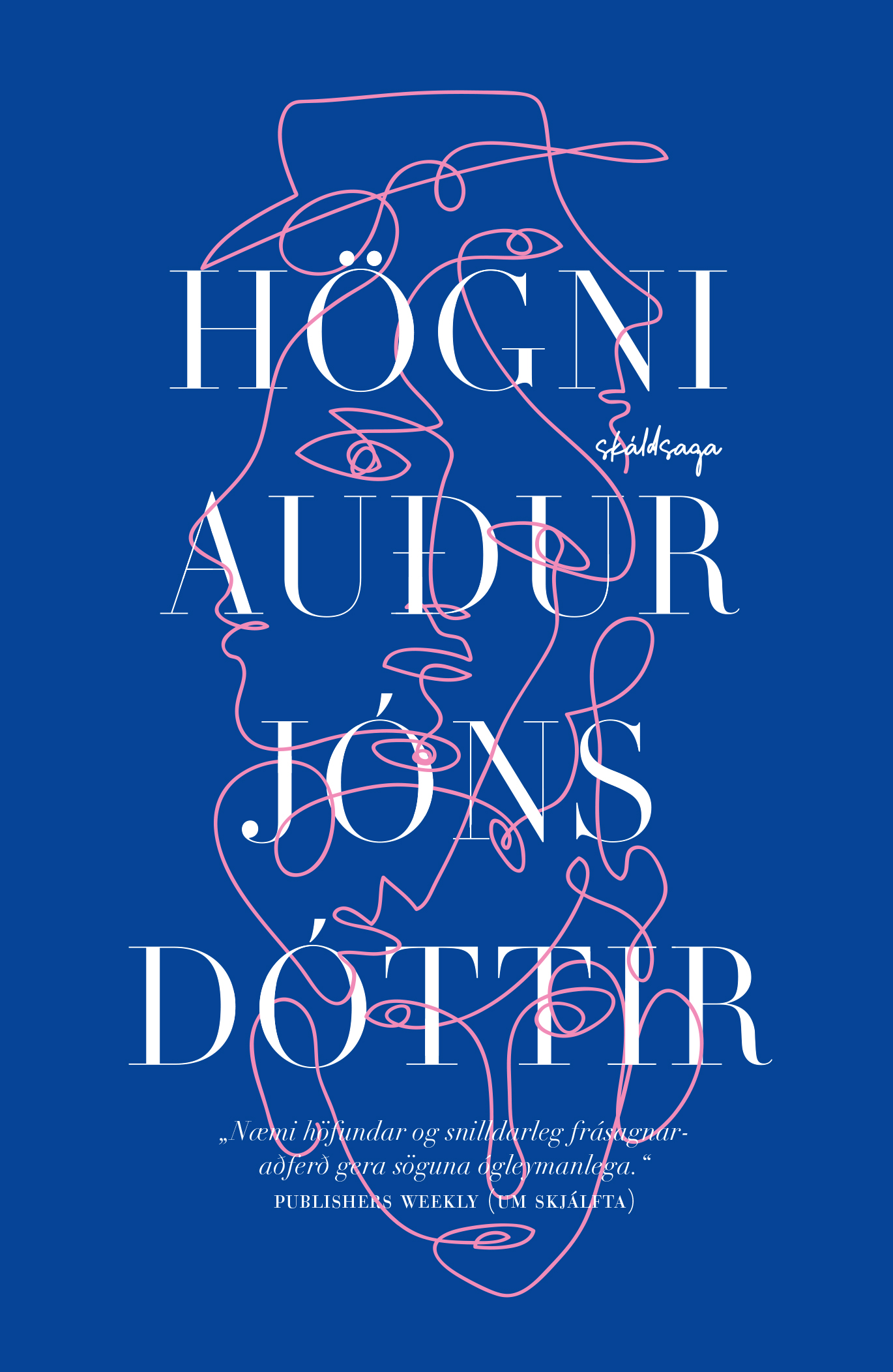
Högni
Read moreHögni starfar á Framtíðarstofnun við að meta áhrif loftslagsbreytinga á umhverfi og skipulag Reykjavíkur. Í einkalífinu hefur aftur á móti hallað undan fæti eftir erfiðan skilnað. Hann leitar svölunar í faðmi kvenna á börum bæjarins – og skyndilega er Högni orðinn umdeildasti maður landsins og er knúinn til að horfast í augu við sjálfan sig.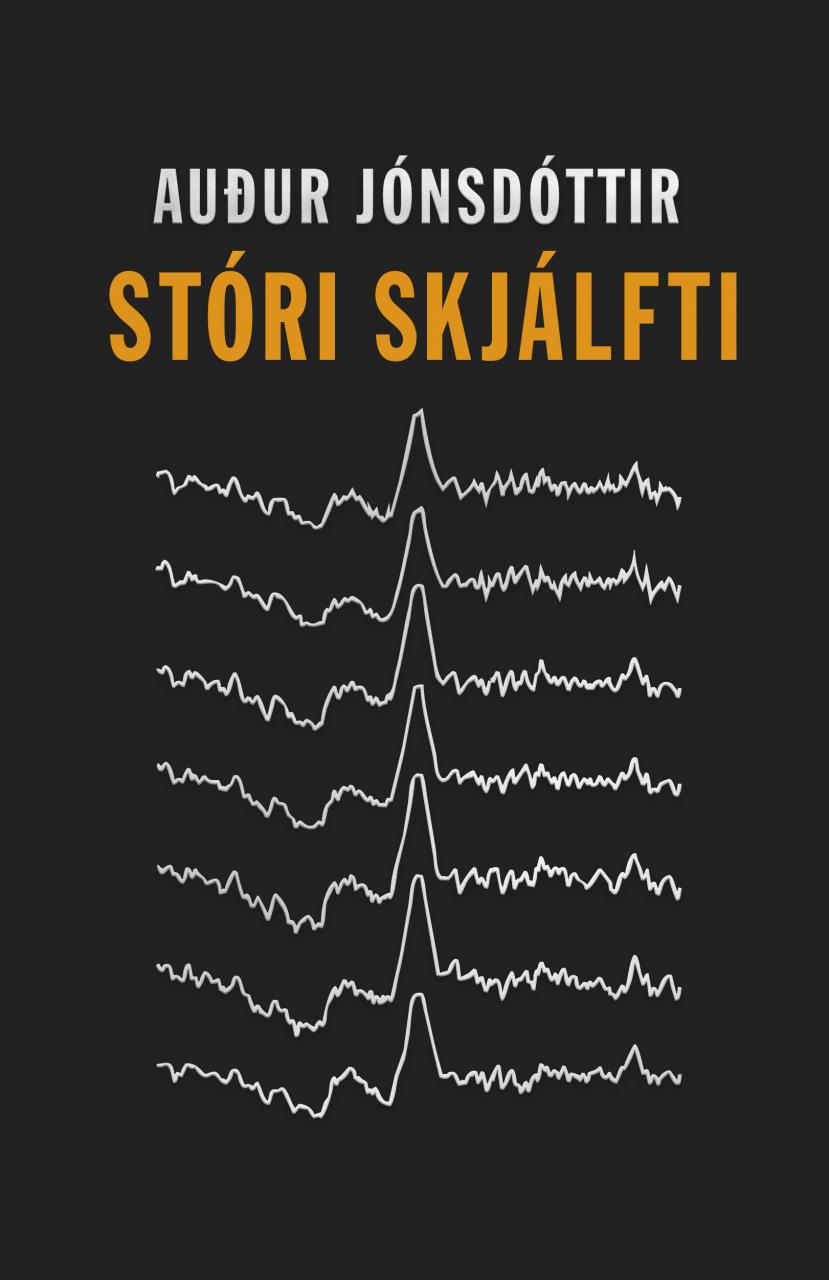
Stóri skjálfti (The Big Quake)
Read more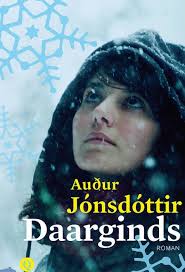
Daarginds
Read more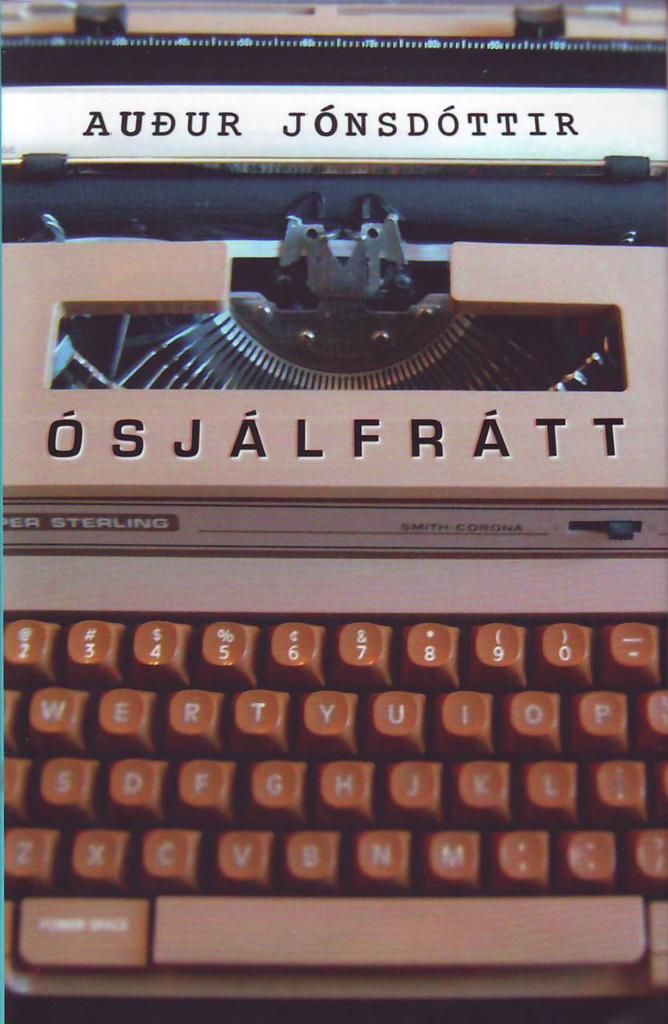
Ósjálfrátt (Involuntary)
Read more
Jenseits des Meeres liegt die ganze Welt
Read moreReiði (Anger)
Read more
Depositum
Read more
Vetrarsól (Winter Sun)
Read moreFolket i kjällaren
Read more
